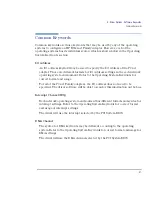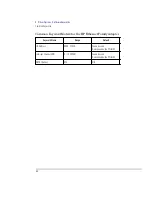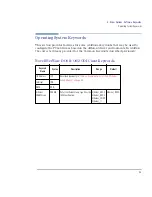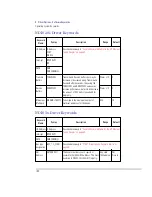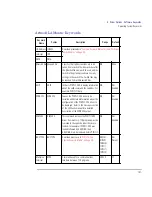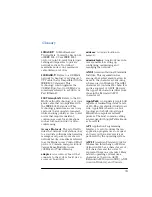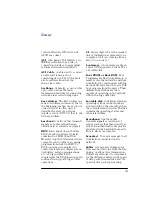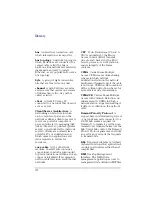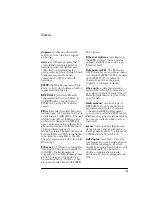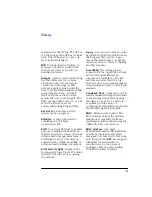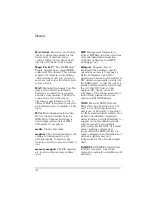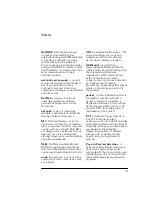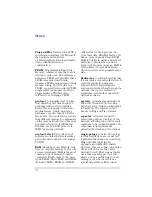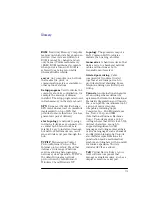
111
English
Glossary
Plug and Play
Referred to as PNP, a
specification originated by Microsoft
for hardware and software
architecture that allows for automatic
device identification and
configuration.
PROM
Programmable Read Only
Memory. A memory chip that can be
written to only once. The difference
between a PROM and a ROM is that a
PROM is manufactured blank,
whereas a ROM is programmed during
manufacturing. To write data to a
PROM, a special device called a PROM
programmer (or burner) is needed.
Programming a PROM is often
referred to as burning a PROM.
protocol
A formalized set of rules
that describes how data should be
exchanged between two entities.
Protocols are typically divided into
modular layers, where each layer
performs a specific function for the
layer above. Protocols allow products
from different vendors to communicate
on the same network. One of the most
popular LAN protocols is Ethernet.
Another common LAN protocol is
IBM's token-ring network.
protocol stack
The collection of
software modules that implements a
particular network protocol (such as
TCP/IP).
RAM
Random Access Memory. Any
type of computer memory that can be
accessed randomly. RAM is the most
common type of memory found in
computers. RAM comes in two basic
types: SRAM (Static RAM) and DRAM
(Dynamic RAM). SRAM and DRAM
differ in the technologies used to
store their data. SRAM is faster, and
hence, more expensive than DRAM.
RAM is volatile in nature and will not
retain its contents when power is
turned off. In common usage, RAM is
often referred to as main memory
which is used to store programs and
data.
Redirector
A software module that
is loaded into every network station. It
captures application program
requests for file and peripheral
services and routes them through the
network: that is, the redirector
transforms client-side requests into
network requests.
registry
A database maintained by
Microsoft Windows 95 for storing
hardware and software configuration
information. The registry is used
heavily in Plug and Play systems.
repeater
A repeater is used to
extend the physical topology of the
network, allowing two or more cable
segments to be coupled together. No
more than four repeaters are
permitted between any two stations.
ring topology
A network topology
in which all devices are connected
together in the shape of a closed loop.
Ring networks are relatively
expensive and difficult to install.
However, they are robust (one failed
device will not cause the entire
network to fail). Most ring networks
use a token-passing protocol that
allows a device on the ring to send
messages out when it receives a
special bit pattern called a token.
Summary of Contents for Vectra VL6 7
Page 1: ...Network Administrator Guide Online Guide Rev 5 0 Date 8 97 ...
Page 9: ...1 Setting Up the Network Connection ...
Page 19: ...2 Installing Novell NetWare Drivers ...
Page 42: ...2 Installing Novell NetWare Drivers NET CFG Options for Novell NetWare 42 English ...
Page 43: ...3 Installing Microsoft Network Drivers ...
Page 56: ...3 Installing Microsoft Network Drivers NDIS 2 01 and 3 1 for Windows 95 56 English ...
Page 57: ...4 Installing Other Network Drivers ...
Page 76: ...4 Installing Other Network Drivers NDIS 2 01 Driver with Other Networking Products 76 English ...
Page 77: ...5 Configuring for Remote Boot ...
Page 95: ...6 Driver Options Software Keywords ...
Page 102: ...6 Driver Options Software Keywords Operating System Keywords 102 English ...

